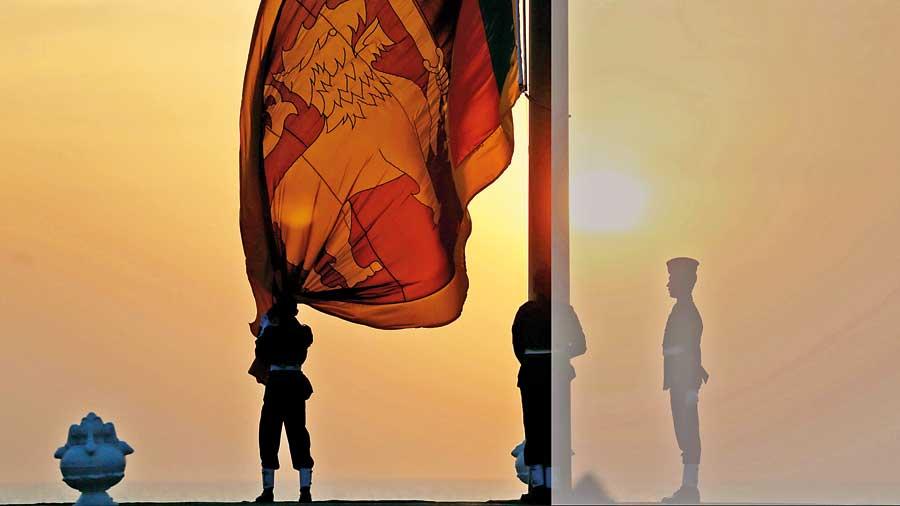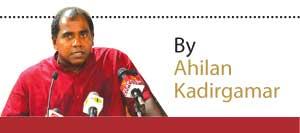Reply To:
Name - Reply Comment

- The political shift in 1956, and its fallout during the next two decades may provide some clues about SL’s current populist moment
- Rajapaksa Govt while criticising previous Govt’s pro-Western and neoliberal tendencies are also setting the stage for similar path of economic developmen

Politics in many parts of the world today are polarised. The tremendous division with forces supporting and opposed to Trump in the US and the Brexit divide in the UK reflect such political polarisation. Is it also the case that Sri Lankan politics today is polarised? And what can we learn from our history about times of political change, polarisation and consolidation?
There is a growing body of contemporary political science scholarship on political polarisation. This literature, including by Jennifer McCoy and Murat Somer, point to various social and political cleavages and historical dynamics undermining the liberal democratic stability of many countries. They trace the build-up of such polarised politics over decades in some countries, including with formative rifts based on social, economic and ethnic grievances that are aggravated by elite political actors.
The emergence of populist politics which mobilises large sections of the populace with an “us versus them” framing threatens liberal democratic governance. Furthermore, not only does such political polarisation often disrupt liberal institutions such as the parliament and the judiciary, the dividing line is often about the very idea of democracy itself and democratic deliberation. For example, democracy is reduced to majoritarian rule without considering the rights of minorities, and the existing representative institutions find it difficult to resolve extreme positions through negotiations.
"Rajapaksa regime’s manoeuvre capitalised on polarised politics in recent years and took the major step of forming a new party claiming to address the grievances of the majority population"
There are many debatable questions about the liberal framing of this scholarship. It glosses over the role of hegemonic external forces that shape such polarisation within nation states, including the impact of colonial and neo-colonial policies that created divide and rule politics. Furthermore, global capitalist development including its recent neoliberal phase that create and exasperate tremendous inequalities and forms of social exclusion require greater attention. Nevertheless many would agree that contemporary times are characterised by polarised politics.
My question is whether our current moment in Sri Lanka could also be characterised as one of such political polarisation? Polarisation implies two major opposing forces, but in Sri Lanka today we are seeing the ascendance of one powerful political camp. I have argued in my recent columns that the current regime in power is entrenching authoritarian populism. And I  would continue that line of argument that our current political moment is one of ideological consolidation towards authoritarian populism, rather than one of political polarisation.
would continue that line of argument that our current political moment is one of ideological consolidation towards authoritarian populism, rather than one of political polarisation.
Now populism many would argue is not new to Sri Lanka. The important political shift in 1956, and its fallout during the next two decades may provide some clues about Sri Lanka’s current populist moment. Newton Gunasinghe wrote in the late 1980s analysing the legacy of Prime Minister SWRD Bandaranaike and his “Sinhala Only”policies in an essay titled ‘A Sociological Comment on the Political Transformations in Sri Lanka in 1956 and the Resultant Socio-Political Processes’:
“In a social structure which generates an ideology that religion does not relate to one’s personal beliefs but to one’s family antecedents, SWRD’s move to become a Buddhist and what is more, his vocal advocacy of Sinhala-Buddhist interests, testifies to his ability of political manoeuvre. SWRD, through these able political tactics, was able to establish his personal hegemony, distancing himself away from his extended family group, while going against the old-established bourgeois strata, simultaneously cultivating solid political relations with newly emergent bourgeois and petty bourgeois strata emanating from diverse social backgrounds. But his ideology of populist Sinhala-Buddhist nationalism, while creating the social base for his assumption of power, also alienated the Tamils in the northern, eastern and central provinces … this laid the political foundations for the terrible ethnic conflict, destabilisation and violence which we are obliged to undergo today.” (Newton Gunasinghe, Selected Essays. Social Scientists’ Association, 1996).
"Democracy is reduced to majoritarian rule without considering the rights of minorities, and the existing representative institutions find it difficult to resolve extreme positions through negotiations"
This manoeuvre by Bandaranaike had significant political, economic and social consequences. The Tamil population was alienated from the state, as an oppositional politics that eventually turned separatist was kindled by a clear move of majoritarianism with respect to language policy, which undermined possibilities of plural democratic politics. Next, the economy was redirected with import substitution policies and an emphasis on rural development. Nevertheless, the shift in 1956 which empowered the Sinhala rural masses including through access to higher education and jobs in the state sector, also paved the way for the radicalisation of Sinhala youth and the first major youth insurrection fifteen years later; the JVP insurrection of 1971 was in many ways a backlash from rural Sinhala youth to the failed promise of 1956.
What I find interesting is the parallel between the Bandaranaike manoeuvre in forming the SLFP after breaking from the UNP, and the Rajapaksa manoeuvre in forming the SLPP after breaking from the SLFP. The RajapaksaGovernment while criticising the pro-Western and neoliberal tendencies of the previous Government are also setting the stage for a similar path of economic development with another section of the capitalist and professional classes, albeit with a stronger role for the security establishment.
In this way, the Rajapaksa regime’s manoeuvre capitalised on polarised politics in recent years and took the major step of forming a new party claiming to address the grievances of the majority population. Furthermore, it has mobilised on the fears of the majority and built a social base to consolidate considerable power for itself.
The danger in Sri Lanka is not just one of polarisation but of tremendous consolidation of authoritarian power. The fallout may not be immediately evident, and its unforeseen consequences will only unfold years if not decades later. In other words, the consequences may not be an ethnic conflict or minorities uprising, rather it could be new fissures along class or rural-urban lines, or perhaps other fault-lines.
The lessons we must draw from our past, as some of our political economists such as S.B.D de Silva used to point out, are that both the import substitution policies and then their collapse were to a large extent influenced by the global political economic situation during that period. However, the political trajectory taken by the political elite greatly exasperated the social divide within Sri Lanka.
Are we now again in a situation of tremendous global political economic upheaval, where the consolidation of power by a regime drawing on polarised politics in the recent past, can result in new fractures that can tear apart our society? These are times when we must not only think and act for our immediate democratic future but also for the political, economic and social future of the next generations.